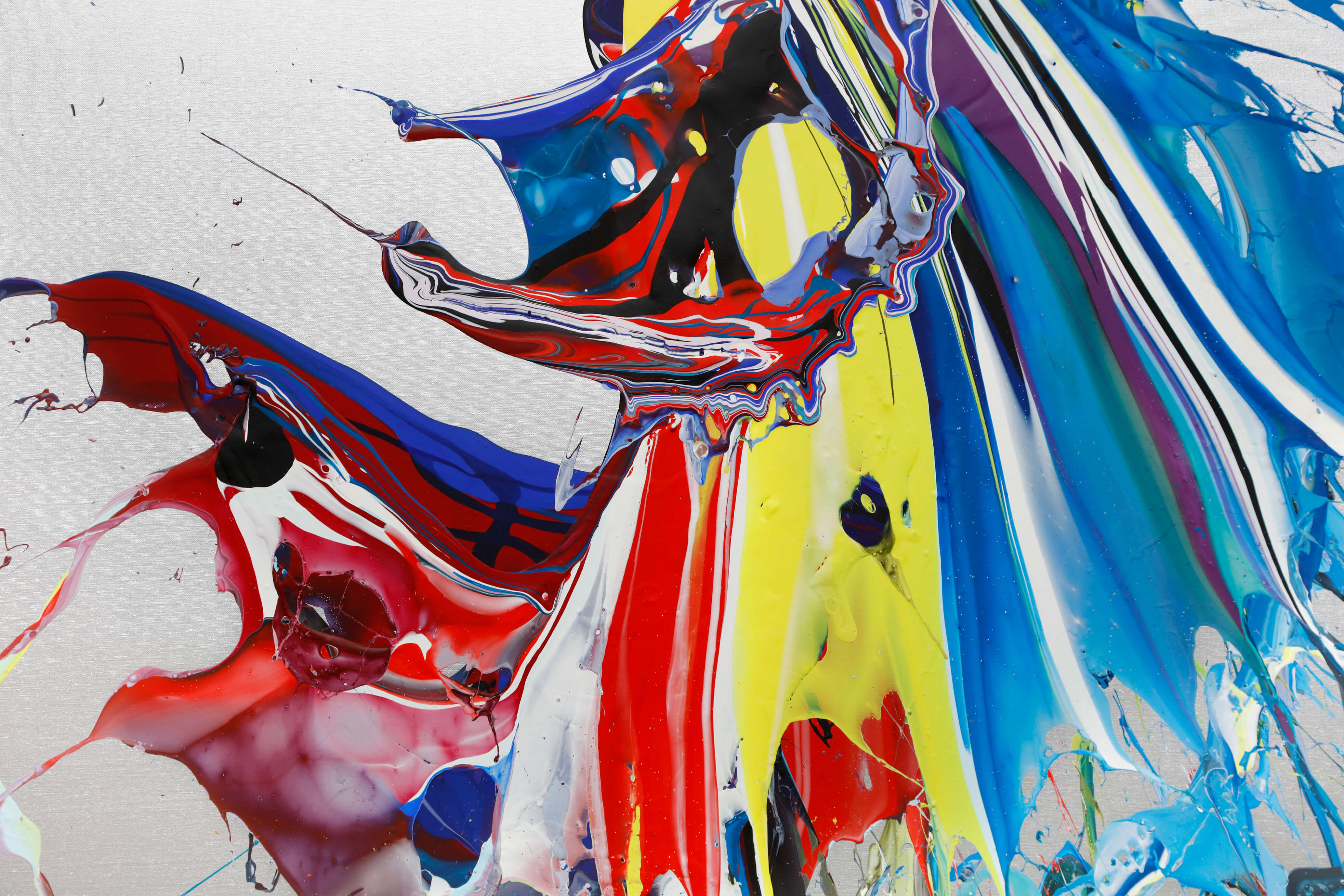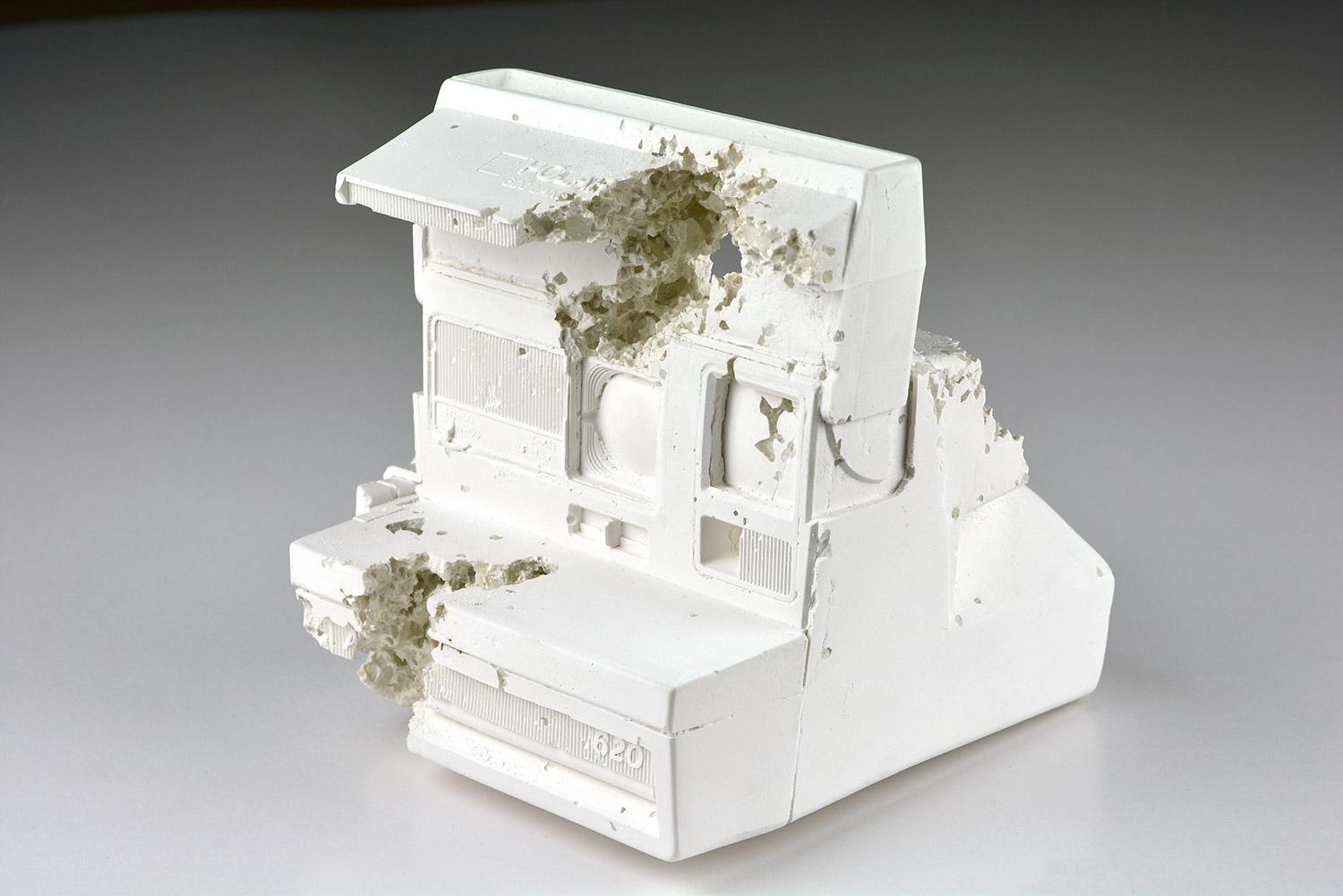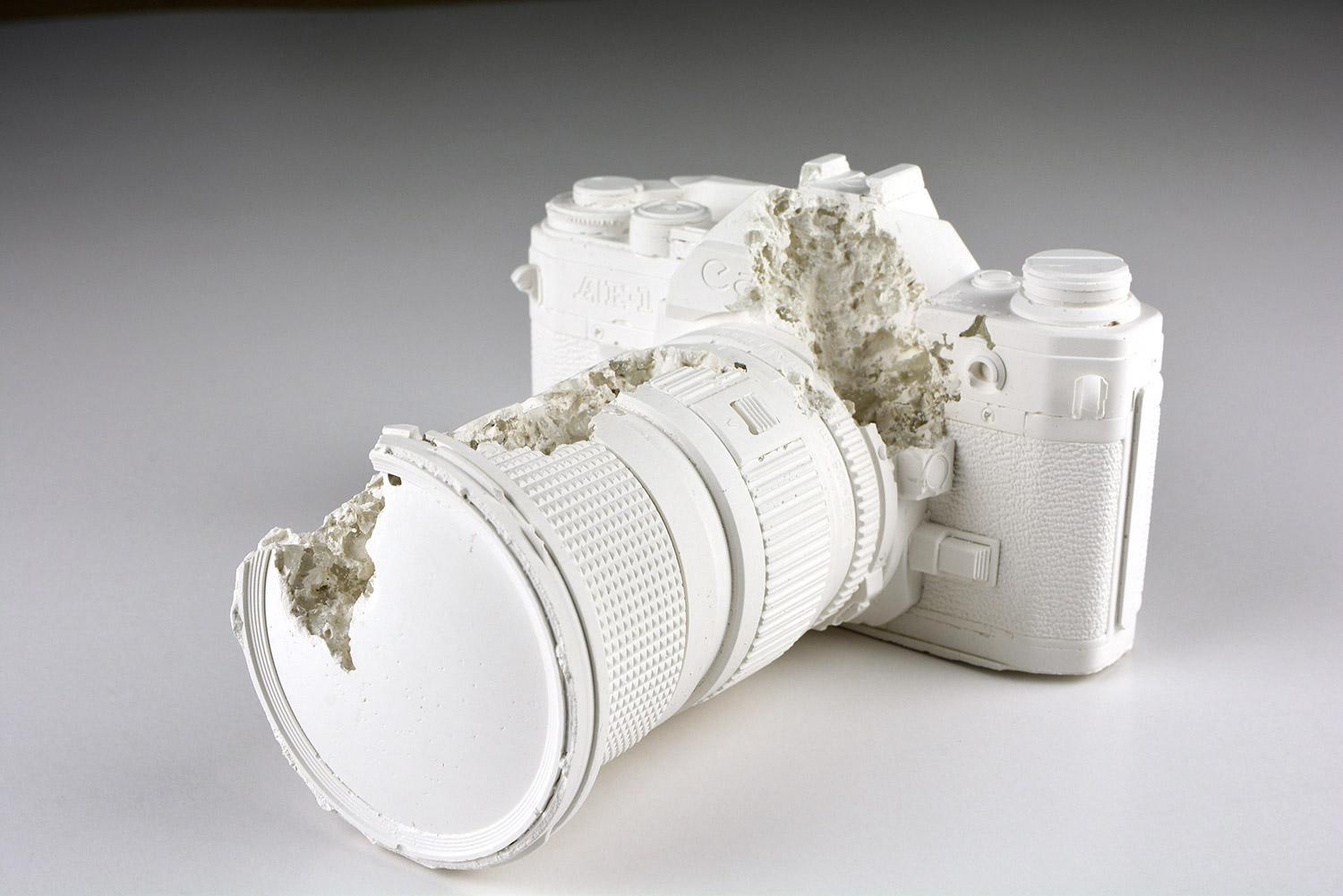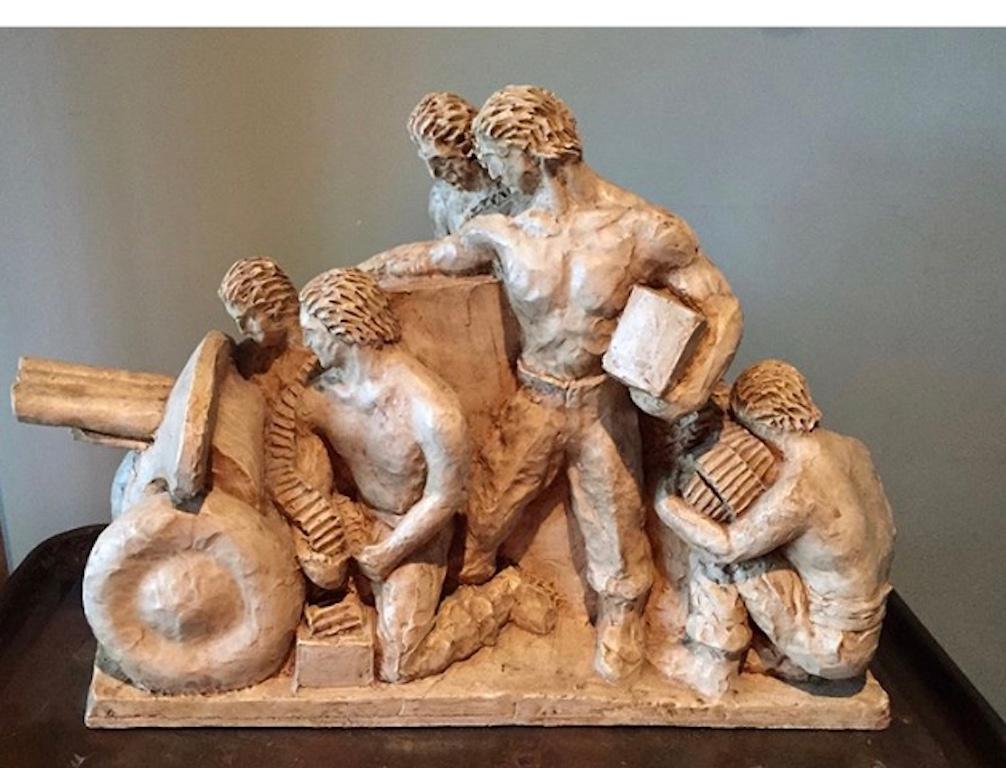Daniel ArshamDaniel Arsham FUTURE RELIC 07 CASSETTE PLAYER Limited Sculpture Sony Walkman 90s2017
2017
About the Item
- Creator:Daniel Arsham (1980, American)
- Creation Year:2017
- Dimensions:Height: 5.75 in (14.6 cm)Width: 5.75 in (14.6 cm)Depth: 5.08 in (12.9 cm)
- Medium:
- Movement & Style:
- Period:
- Condition:
- Gallery Location:Madrid, ES
- Reference Number:1stDibs: LU1033114462272
Daniel Arsham
Daniel Arsham lives and works in New York. Arsham has been exhibited worldwide, including at the Moco Museum, Amsterdam; the How Museum, Shanghai; High Museum of Art, Atlanta, GA and the Contemporary Art Center, Cincinnati, OH. His works are included in the permanent collections of the Pérez Art Museum, Miami, FL; the Walker Art Center in Minneapolis, MN and the Centre Pompidou, Paris. His artistic practice includes several high profile collaborations with choreographer Merce Cunningham, Producer Pharrell Williams and Designer Hedi Slimane and companies such as Dior and Rimowa. Arsham is the co-founder of Snarkitecture, a New York-based collaborative design practice established in 2007 to investigate the boundaries between disciplines of art, architecture and design. A component of Arsham’s iconic and immediately recognizable practice is the conception of his works as fossilized “future” relics that distort the viewer’s perception of space and time.

- ShippingRetrieving quote...Ships From: Madrid, Spain
- Return PolicyA return for this item may be initiated within 14 days of delivery.
- Daniel Arsham - FUTURE RELIC 06 POLAROID CAMERA Limited Sculpture Modern DesignBy Daniel ArshamLocated in Madrid, MadridDaniel Arsham - FUTURE RELIC 06 - POLAROID CAMERA Date of creation: 2016 Medium: Plaster and crushed glass Edition number: 251/500 Size: 12.7 × 14.6 × 14 cm Condition: In mint condi...Category
2010s Modern Figurative Sculptures
MaterialsGlass, Plaster
- FUTURE RELIC 02 Limited Sculpture Modern Art Design 35mm Camera Canon ConceptBy Daniel ArshamLocated in Madrid, MadridDaniel Arsham - FUTURE RELIC 02 - CANON AE1 Date of creation: 2014 Medium: Plaster and crushed glass Edition number: 074/450 Size: 14.6 × 15.9 × 9.5 cm Condition: In mint conditions...Category
2010s Modern Figurative Sculptures
MaterialsGlass, Plaster
- Daniel Arsham CRYSTAL RELIC 003 Asahi Pentax Camera Modern Sculpture ConceptualBy Daniel ArshamLocated in Madrid, MadridDaniel Arsham - CRYSTAL RELIC 003 Date of creation: 2021 Medium: Sculpture made of cast resin Edition number: 445/500 Size: 11.43 × 13.97 × 17.7 cm Condition: Brand new, in mint cond...Category
2010s Modern Figurative Sculptures
MaterialsResin
- Ryan Travis Christian - BIRDER, THE MAYOR & SHERM Vinyl Modern Black & WhiteBy Ryan Travis ChristianLocated in Madrid, MadridRyan Travis Christian - BIRDER, THE MAYOR & SHERM Date of creation: 2022 Medium: Vinyl and mixed media Edition: 300 Size: Birder: h190 x w130 x d215 mm, The Mayor: h260 x w110 x d110...Category
2010s Other Art Style Figurative Sculptures
MaterialsPlastic, Mixed Media
- YVES KLEIN L'OURS POMPON Limited sculpture includes COA IKB Contemporary DesignBy Yves KleinLocated in Madrid, MadridL'OURS POMPON - EDITION YVES KLEIN Date of creation: 2022 Medium: Artisanal resin and pigments Edition: 999 (few numbers available, assigned randomly) Size: Plexiglas bell size - 49 ...Category
2010s Contemporary Figurative Sculptures
MaterialsResin, Plexiglass, Pigment
- MARK RYDEN - YUKI THE YOUNG YAK (WHITE) Limited Surrealism Lowbrow Art DesignBy Mark RydenLocated in Madrid, MadridMARK RYDEN - YUKI THE YOUNG YAK (WHITE) Date of creation: 2022 Medium: Plush and rubber Edition: 500 Size: 43.20 x 30.50 x 25.4 cm Condition: Brand new, sent inside its custom box Th...Category
2010s Surrealist Figurative Sculptures
MaterialsRubber
- Future Relic 05: TelephoneBy Daniel ArshamLocated in Miami, FLDaniel Arsham Future Relic 05: Telephone, 2016 Sold in mint condition - in original box with custom foam support and gloves. Plaster and crushed glass sculpture 4.7 x 8.5 x 9 in Edit...Category
2010s Modern Abstract Sculptures
MaterialsGlass, Plaster
- "Pioneer Family" WPA American Modernism Plaster Maquette Realism 20th CenturyBy William ZorachLocated in New York, NY"Pioneer Family," 23 1/2 x 16 1/4 x 10 3/4 inPlaster. c. 1927. Unsigned. Realism The Smithsonian has a cast of this sculpture in its collection. Pictured on the cover of “The Sculpt...Category
1920s American Modern Figurative Sculptures
MaterialsPlaster
- Industrial Machine Age American Scene WPA Mid 20th Century 1939 SF World's FairLocated in New York, NYIndustrial Machine Age American Scene WPA Mid 20th Century 1939 SF World's Fair HAIG PATIGIAN (American/Armenian, 1876-1950) Aeronautics Pediments Two Plaster Casts, c. 1930s each 13.25 x 14.75 x 6 inches It's possible these moquettes were created for the 1939 World's Fair, the Golden Gate International Exhibition in San Francisco. Provenance: Private Collection of Lois M. Wright, Author of "A Catalogue of the Life Works of Haig Patigian, San Francisco Sculptor, 1876-1950),” 1967 Loan to Oakland Museum of California (Oakland, CA) BIO Haig Patigian is noted for his classical works, which are especially numerous in public venues in San Francisco, California. Patigian was born in Van, Armenia, which at that time was under Turkish rule. Haig was the son of Avedis and Marine Patigian, both teachers in the American Mission School there. He and his older brother showed an aptitude for art early on and were encouraged by their parents. Their father himself had taken up the new hobby of photography. The 1880s were harsh times, however, for many Armenians under an oppressive rule by the Turkish government. Many people were fleeing to the safety of the United States. Suspicious Turkish authorities accused his father of photographing city structures for the Russian government, and in 1888 he fled for his life to America. Haigs father made his way to Fresno, California, and began life anew as a ranch hand. Within two years he sent for his wife, as well as Haig, his three sisters and brother, and in 1891 the Patigians made the journey from Armenia. Haigs father, an industrious man, worked on various farms, and eventually bought his own ranch and vineyard. It was among fertile farmland of Fresno that Haig grew up. Young Haigs education consisted of teachings by his parents and by intermittent attendance in public schools. Although he had dreams of becoming an artist, he did not have the opportunity for formal study of art, and began working long days in the vineyards around Fresno. At age seventeen, Haig made a step towards his dreams and apprenticed himself to learn the trade of sign painting. In his spare time he nurtured his interest in art by painting nature and life scenes with watercolors and oil paints. When his sign-painting mentor left Fresno, Haig opened his own shop and made a name for himself in the town. San Francisco, in the meantime, had been attracting artists since the Gold Rush and had become a thriving art center. Within a few years, Haig had put aside several hundred dollars to move to San Francisco, joining his brother who was already working there as an illustrator. In 1899, when he was twenty-three, Haig had saved enough money to enroll at the Mark Hopkins Art Institute in San Francisco. Like many aspiring artists of his time, Patigian supported himself by working as a staff artist in the art department of a local newspaper, and in the winter of 1900, nearing his 24th birthday, Haig began work for the San Francisco Bulletin, producing cartoons, black and white illustrations, as well as watercolors. In 1902 tragedy struck Haig and his family. His 29-year-old brother died of pneumonia, and then his frail mother died a short time later. Five months more saw his youngest sister, just out of high school, die too. Saddened and depressed, Haig moved out of the studio he had shared with his brother, and into a dilapidated studio in a poor section of town. During this time of sadness, Haig fed a growing interest in sculpture. In 1904 Haig created what he later called his "first finished piece in sculpture". The work, called "The Unquiet Soul", depicted a man thrown back against a rock while waves lash at his feet. The body was tense and twisted, with one hand, in Haig's own words, "searchingly leaning and clutching the rock, while the other masks his troubled head". The Press Club of San Francisco, which Haig had joined in 1901, put "The Unquiet Soul" on exhibition and local headlines proclaimed "Local Newspaper Artist Embraces Sculptor's Art", and "First Work Predicts Brilliant Future". With the support of friends and community acclaim, the young illustrator left his newspaper job and became a professional sculptor. The path of his new career was not easy though. Haig had never made much money working for the newspaper and his father needed help with growing debt from funeral expenses and business problems. From time to time Haig sold some artwork, but also occasionally borrowed from friends to pay the rent. He was the classic 'starving artist'. In the spring of 1905 a white-bearded 81-year-old stranger knocked on Haig's door. It was George Zehndner, from Arcata, California. Zehndner had been born in Bavaria, Germany in 1824, the son of a farmer. In 1849 he had come to America looking for prosperity, settling in Indiana, where he worked on a farm and learned English. He found his way to the West Coast in 1852. Penniless, he worked in various jobs from San Francisco to Sacramento, then found some luck working in the gold fields of Weaverville in Trinity County, and eventually moving to a farm on 188 acres near Arcata. In his 77th year in May of 1901, Zahndner had taken a trip to San Jose, where he stood in a crowd to see a man he thought much of, President William McKinley. McKinley was popular as 'the first modern president' partially because he realized going out to meet the common person increased his support. In September of that year, however, an anarchist assassinated the president while he stood in a receiving line at the Pan-American Exhibition in Buffalo, New York. Soon after, the city of San Jose erected a statue of the slain president in St. James Park. Zehndner took a second trip to San Jose where he visited the McKinley monument. Touched, Zehndner decided that, no matter the cost, his town of Arcata too would memorialize McKinley. George Zehndner had read about Haig in a newspaper article and asked if Patigian would create a heroic statue of the late President McKinley for Arcata. When asked how much it would cost, Haig responded, despite his borderline poverty, with the fabulous sum of $15,000. Zehndner agreed. The President was to be portrayed standing, wearing an overcoat, with his feet planted squarely on the ground. In the finished statue, one hand is held out before him in a typical posture of speaking, with the other hand holding the speech as his side. The 9-foot statue...Category
1930s American Modern Figurative Sculptures
MaterialsPlaster
- 2 Sculptures: "The Power" & "The Glory" WPA Depression WWII era mid 20th centuryBy Agnes YarnallLocated in New York, NY2 Sculptures: "The Power" & "The Glory" WPA Depression WWII era mid 20th century by Agnes Yarnall circa 1940s. Sculptor, painter, poet and artistic historian, Agnes Yarnall has, since the age of six been breathing life into her art. Renowned as a sculptor, whose commissioned portrayals of contemporary celebrities are prized. She has sculpted Judith Anderson, Edna St. Vincent Millay, Carl Sandburg...Category
1940s American Modern Figurative Sculptures
MaterialsPlaster
- Cavaliere Della PaceLocated in Atlanta, GABorn in Rome, Italy in 1963, lives and works in Rome. Artist is currently on display in Besharat Gallery Barbizon, France.Category
21st Century and Contemporary Modern Figurative Sculptures
MaterialsResin, Plaster
- "The Nose" White Modern Plaster Sculpture on a Lucite and Black MarbleLocated in Pasadena, CAThis whimsical sculpture features a white plaster nose on a black marble base sitting on a Lucite one. The overall impression is elegant, because of the ...Category
1990s Modern Figurative Sculptures
MaterialsMarble





